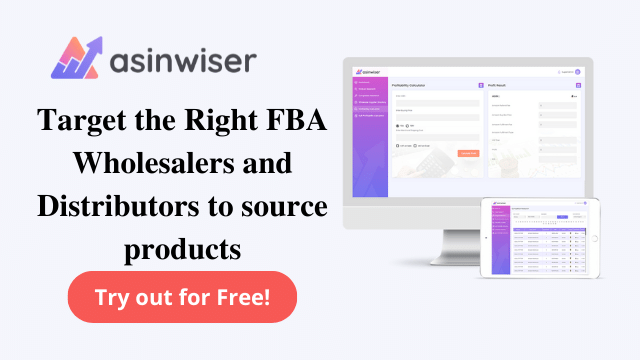
Here is what No One Tells you about Amazon Supply Chain
Regardless, you are a larger or smaller company looking to scale your online operations, and Amazon is an excellent model to increase productivity, expand reach, and build profit.
While there are a plethora of things that drove Amazon to be the eCommerce leader, it is now, and the state-of-the-art supply chain guide is the most deciding component to its success. Still, its state-of-the-art supply chain model is by far the most critical element to the company’s colossal success. Brands that make millions on Amazon each year strive to turn a significant profit.
The main reason is that many sellers and vendors don’t have the supply chain and logistics fundamentals under control. This causes money to come out from different elements of the operation. Amazon is strongly committed to conducting our business lawfully and ethically, including engaging with suppliers who respect human rights, provide safe and inclusive workplaces, and promote a sustainable future.
The Amazon supply chain is a remarkable achievement in retail logistics. Hence, continuously optimizing each link in the chain to improve customer satisfaction and become the preferred online retailer across the globe. This article will attempt to provide you a better understanding of the Amazon Supply Chain guide.
What is the Amazon Supply Chain?
Amazon’s supply chain refers to Amazon’s whole process of product warehouse to inventory management, pricing, delivery, and many more. Amazon has ensured that everything is working quickly and efficiently. Sellers either choose to manage fulfillment or allow Amazon to distribute, package, and ship products through Amazon’s fulfillment centers.
Being a third party retailer selling on the Amazon Marketplace, you have the opportunity to use Amazon’s fulfillment services:
• Fulfillment by Amazon (FBA) – Sellers leverage Amazon’s fulfillment for products sold on the Amazon Marketplace. When a seller decides to sell through FBA, Amazon takes care of all of the logistics, including packing, shipping, customer service, etc. Hence, it allows you to sell on Amazon Prime, which is another benefit of selling through FBA.
• Using your fulfillment (FBM) – Sellers manage fulfillment for their products marketed on the Amazon Marketplace. When a seller chooses FBM, you are in charge of packing, shipping, customer service, returns, and other logistics. But the only disadvantage is you won’t have the option to sell on Prime.
What is the purpose of Amazon Supply Chain?
A driving force behind the constant development of the Amazon supply chain is the purpose of selling as many products as possible. This helps increase customer experience and satisfaction, which increases traffic because consumers are happy, which improves the number of salespeople and, consequently, results, which improves quantities, decreases structural costs, makes products cheaper, etc. As the retail mammoth has approved growth, it has never rejected investing in service extension to boost growth.
How does Amazon supply and demand work?
The Amazon supply chain strategy is an excellent working system planned. It is one of the best ways for many retailers to learn more about the Amazon Supply Chain. It is one of the convenient ways Amazon has optimized each stage of the supply chain strategy. Amazon also includes the entire logistics cycle. Amazon follows a push-pull process wherein the inventory is accommodated in a push strategy and the order’s shipment in a pull strategy. Needless to say, Amazon follows pull plans for the product that it does not stock.
Amazon stores inventory within these fulfillment centers because they always have products ready to meet demand anywhere in the world. This vast supply chain network of warehouses facilitates Amazon to ship orders to customers efficiently and quickly, and that too at minimum expense.
Why is Amazon’s supply chain so successful?
Combining advanced technology and an expanded network of warehouses, multi-tier inventory management, and excellent transportation makes Amazon the most prominent supply chain globally.
Amazon’s warehouses are strategically planned stocked, moving closer and closer to main metropolitan areas and city centers. Consequently, it works a simple drive policy for its warehouses and forecasts demand for the specific region.
This fact is that low demand will drive great competition but at a high conversion rate. In order to develop this long tail, Amazon has introduced “FBA,” where the seller refers to the product, pays for the stock, and leaves the distribution and delivery to the customer as Amazon’s responsibility.
Final Takeaway
Selling internationally and domestically isn’t meant for everyone, but Amazon’s global supply chain presents endless opportunities to grow and expand into different markets worldwide. Although consumers abroad might not know about your brand, you will understand what Amazon is and be more likely to purchase your products.
There is so much to learn from Amazon’s supply chain process. If you are a seller considering selling on Amazon, having this built-in system can be incredibly beneficial as you expand your business and brand.
Having an intelligent software tool—Asinwiser—for online sellers will assist you to run your business in the right direction. Asinwiser.com is an excellent solution that will help you to target your potential audience with its all-in-one features such as brand story, product research, competitor research, profitability calculator, fba calculator and so on.
Share this:
Subscribe to Our Newsletter
Recent Post
- Top 13 Amazon Inventory Management Tools for FBA Sellers in 2023
- Asinwiser: The Ultimate OMSGuru Alternative for Amazon Sellers
- Repricer.com Alternative: Why Asinwiser is the Superior Choice for Amazon Sellers
- Aura Alternative: Why Asinwiser is the Superior Choice for Amazon Repricing
- Maximize Amazon Sales with Asinwiser: The Superior Amazon Repricer & Revenue Analytics Tool
